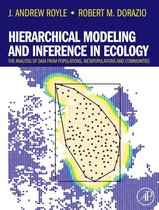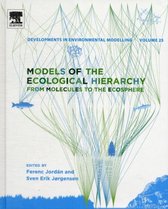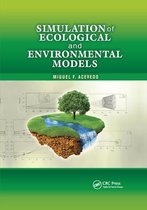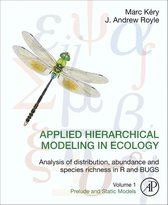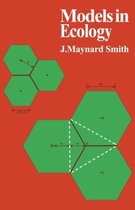A Practical Guide to Ecological Modelling: Using R as a Simulation Platform Using R as a Simulation Platform
Afbeeldingen
Sla de afbeeldingen overArtikel vergelijken
- Engels
- Hardcover
- 9781402086236
- 21 oktober 2008
- 372 pagina's
Samenvatting
Many texts on ecological models jump to describing either particular relations or computational results, without treating in detail the conceptual and mathematical basis of many steps in modelling: why set up models, what are basic conceptual models, how do conservation laws come in, how are models solved, what are steady states. This book is intended to bridge this gap. It is intended as an introductory text for graduate and post-graduate students, but also as a help for experienced ecologists who want to make more of their data by modelling. It contains many examples, all worked out in the open-source package R, providing the reader the opportunity to practice all methods and get hands-on experience.
Audience:
This book will be of interest to advanced undergraduate and graduate students in ecology, biology, geology, bio-engineering, and to some extent students from physics and chemistry.
Mathematical modelling is an essential tool in present-day ecological research. Yet for many ecologists it is still problematic to apply modelling in their research. In our experience, the major problem is at the conceptual level: proper understanding of what a model is, how ecological relations can be translated consistently into mathematical equations, how models are solved, steady states calculated and interpreted. Many textbooks jump over these conceptual hurdles to dive into detailed formulations or the mathematics of solution. This book attempts to fill that gap. It introduces essential concepts for mathematical modelling, explains the mathematics behind the methods, and helps readers to implement models and obtain hands-on experience. Throughout the book, emphasis is laid on how to translate ecological questions into interpretable models in a practical way.
The book aims to be an introductory textbook at the undergraduate-graduate level, but will also be useful to seduce experienced ecologists into the world of modelling. The range of ecological models treated is wide, from Lotka-Volterra type of principle-seeking models to environmental or ecosystem models, and including matrix models, lattice models and sequential decision models. All chapters contain a concise introduction into the theory, worked-out examples and exercises. All examples are implemented in the open-source package R, thus taking away problems of software availability for use of the book. All code used in the book is available on a dedicated website.
Productspecificaties
Inhoud
- Taal
- en
- Bindwijze
- Hardcover
- Oorspronkelijke releasedatum
- 21 oktober 2008
- Aantal pagina's
- 372
- Illustraties
- Met illustraties
Betrokkenen
- Hoofdauteur
- Karline Soetaert
- Tweede Auteur
- Peter M. J. Herman
- Co Auteur
- Peter M. J. Herman
- Hoofduitgeverij
- Springer
Overige kenmerken
- Editie
- 2009
- Extra groot lettertype
- Nee
- Product breedte
- 161 mm
- Product hoogte
- 20 mm
- Product lengte
- 241 mm
- Studieboek
- Nee
- Verpakking breedte
- 166 mm
- Verpakking hoogte
- 30 mm
- Verpakking lengte
- 242 mm
- Verpakkingsgewicht
- 757 g
EAN
- EAN
- 9781402086236
Je vindt dit artikel in
- Taal
- Engels
- Boek, ebook of luisterboek?
- Boek
- Studieboek of algemeen
- Algemene boeken
- Beschikbaarheid
- Leverbaar
Kies gewenste uitvoering
Prijsinformatie en bestellen
Rapporteer dit artikel
Je wilt melding doen van illegale inhoud over dit artikel:
- Ik wil melding doen als klant
- Ik wil melding doen als autoriteit of trusted flagger
- Ik wil melding doen als partner
- Ik wil melding doen als merkhouder
Geen klant, autoriteit, trusted flagger, merkhouder of partner? Gebruik dan onderstaande link om melding te doen.

